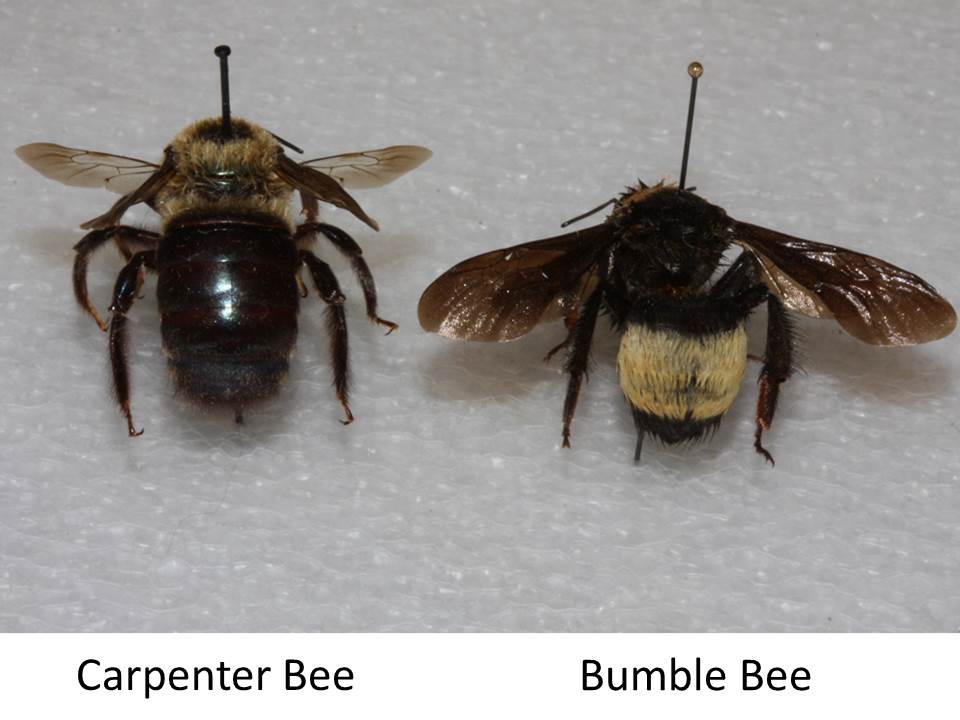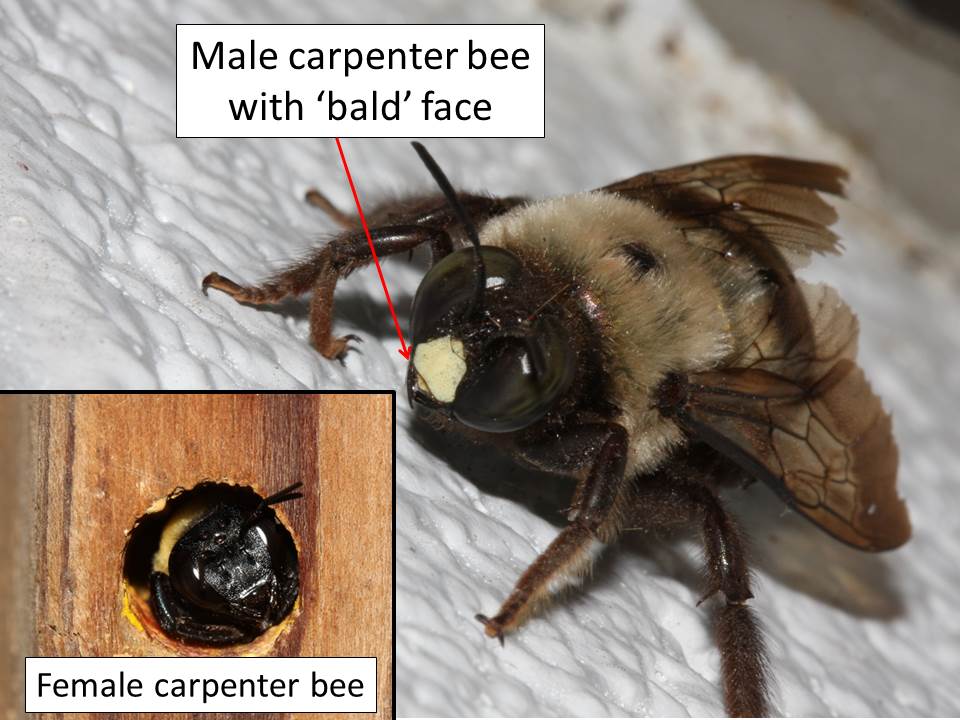–By Dr. Jeff Whitworth and Dr. Holly Schwarting
Carpenter Bees have been very active all across the state for the preceding 7-10 days and the noticeable activity may continue for another week or two. These large (3/4 to 7/8 inch) black and yellow bees are most often mistaken for bumble bees. However, carpenter bees, even though around the same size and flying at about the same speed, have bare abdomens while bumble bees have hairy abdomens. Carpenter bees thus have shiny, dark blue to black abdomens while most bumble bees have hairy yellow abdomens.
Most folks do not want to get close enough to any large bee to make these distinctions, and they are even more difficult to distinguish when they are flying. But, if you have large black and yellow bees hovering around any wooden structures and they are ‘dive bombing’ or buzzing around intruders into their area, i.e. you, neighbors, pets, etc. they are most likely carpenter bees. It is the males that are buzzing intruders and they can be distinguished by their ‘bald faces’ which appear to have a yellow triangle in the middle of a black face.
These males cannot sting; they are just very territorial because they are waiting for a female bee to emerge from one of the holes in the wood so they can mate with her. This dive bombing behavior will continue until all the new females have mated, then the males will die and the noticeable activity will cease. These females will then excavate new holes or extend established ones located in older, untreated, unpainted wood where they provision cells with nectar and pollen and then deposit eggs. The larvae feed on these provisions throughout the summer, and then pupate. The next generation of adults typically does not become active until the following spring. While carpenter bees are not social bees, populations may build up in favorable locations and over years of repeated excavating, can weaken even structural wood. For more information on carpenter bee biology and management, please visit: https://www.bookstore.ksre.ksu.edu/pubs/MF2946.pdf

